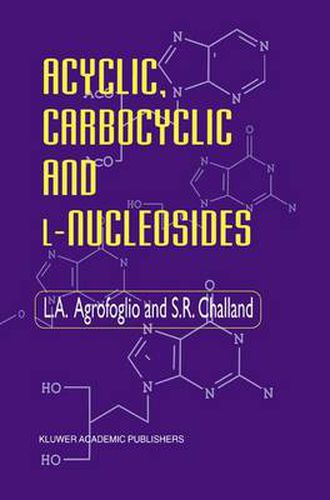Readings Newsletter
Become a Readings Member to make your shopping experience even easier.
Sign in or sign up for free!
You’re not far away from qualifying for FREE standard shipping within Australia
You’ve qualified for FREE standard shipping within Australia
The cart is loading…






This title is printed to order. This book may have been self-published. If so, we cannot guarantee the quality of the content. In the main most books will have gone through the editing process however some may not. We therefore suggest that you be aware of this before ordering this book. If in doubt check either the author or publisher’s details as we are unable to accept any returns unless they are faulty. Please contact us if you have any questions.
Interest in chemical entities capable of blocking or modifying cell metabolism ultimately goes back to the discovery of the structure of DNA in the 1950s. Understanding of the biochemical processes involved in cell metabolism rapidly led to the idea that compounds could be designed which might interfere with these processes, and thus could be used in the treatment of the diseases caused by viral infection. Since then, several classes of drugs have been discovered which depend for their effect on modification of the proper functioning of nucleic acids and, with the introduction of acyclovir for the treatment of Herpes infections, nucleoside analogues have become the cornerstone of antiviral chemotherapy.
The success of the early nucleoside agents, the toxicity and metabolic instability of many nucleoside analogues, and the effects of viral pathogens on public health are driving the design, synthesis and evaluation of new nucleoside analogues, with much attention turning to nucleosides containing “non natural’ sugar analogues. This book focuses on the development of these agents, and draws together all the available material in an easily consulted form, which at the same time guides the reader into the research literature on the subject. Written primarily for the medicinal chemist, coverage includes both synthetic strategies and outline guidance on the main trends in biological activity. Particular attention is drawn to the comparison of synthetic routes to compounds with their natural analogues. Finally, the important antiviral activities of the compounds are treated, including anti-retrovirus, anti-hepadnavirus and anti-herpes virus properties.
Written mainly for medicinal chemists in the pharmaceutical industry and synthetic organic chemists in academe, this book will also be attractive to researchers in institutions focusing on cellular metabolism. Advanced students of organic chemistry will find the clear discussion of the synthetic strategies adopted in the development of these compounds a useful introduction to this exciting and challenging area.
$9.00 standard shipping within Australia
FREE standard shipping within Australia for orders over $100.00
Express & International shipping calculated at checkout
This title is printed to order. This book may have been self-published. If so, we cannot guarantee the quality of the content. In the main most books will have gone through the editing process however some may not. We therefore suggest that you be aware of this before ordering this book. If in doubt check either the author or publisher’s details as we are unable to accept any returns unless they are faulty. Please contact us if you have any questions.
Interest in chemical entities capable of blocking or modifying cell metabolism ultimately goes back to the discovery of the structure of DNA in the 1950s. Understanding of the biochemical processes involved in cell metabolism rapidly led to the idea that compounds could be designed which might interfere with these processes, and thus could be used in the treatment of the diseases caused by viral infection. Since then, several classes of drugs have been discovered which depend for their effect on modification of the proper functioning of nucleic acids and, with the introduction of acyclovir for the treatment of Herpes infections, nucleoside analogues have become the cornerstone of antiviral chemotherapy.
The success of the early nucleoside agents, the toxicity and metabolic instability of many nucleoside analogues, and the effects of viral pathogens on public health are driving the design, synthesis and evaluation of new nucleoside analogues, with much attention turning to nucleosides containing “non natural’ sugar analogues. This book focuses on the development of these agents, and draws together all the available material in an easily consulted form, which at the same time guides the reader into the research literature on the subject. Written primarily for the medicinal chemist, coverage includes both synthetic strategies and outline guidance on the main trends in biological activity. Particular attention is drawn to the comparison of synthetic routes to compounds with their natural analogues. Finally, the important antiviral activities of the compounds are treated, including anti-retrovirus, anti-hepadnavirus and anti-herpes virus properties.
Written mainly for medicinal chemists in the pharmaceutical industry and synthetic organic chemists in academe, this book will also be attractive to researchers in institutions focusing on cellular metabolism. Advanced students of organic chemistry will find the clear discussion of the synthetic strategies adopted in the development of these compounds a useful introduction to this exciting and challenging area.